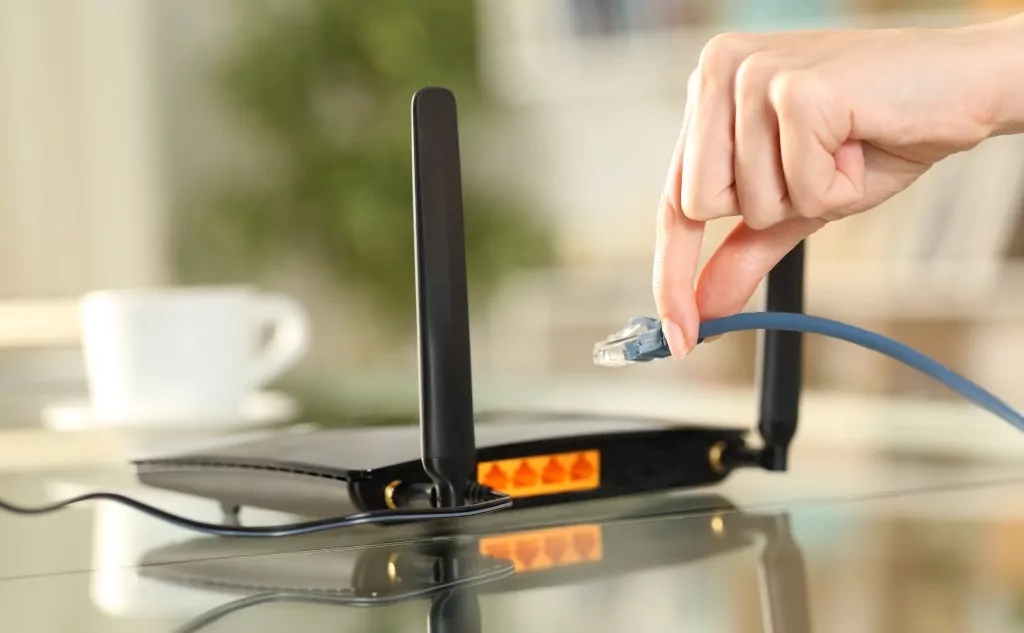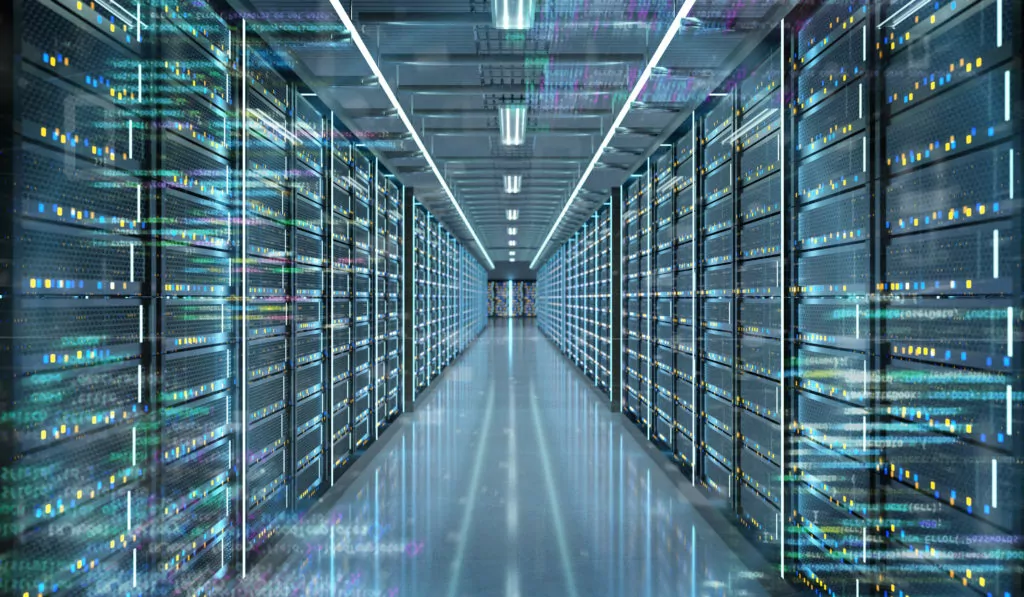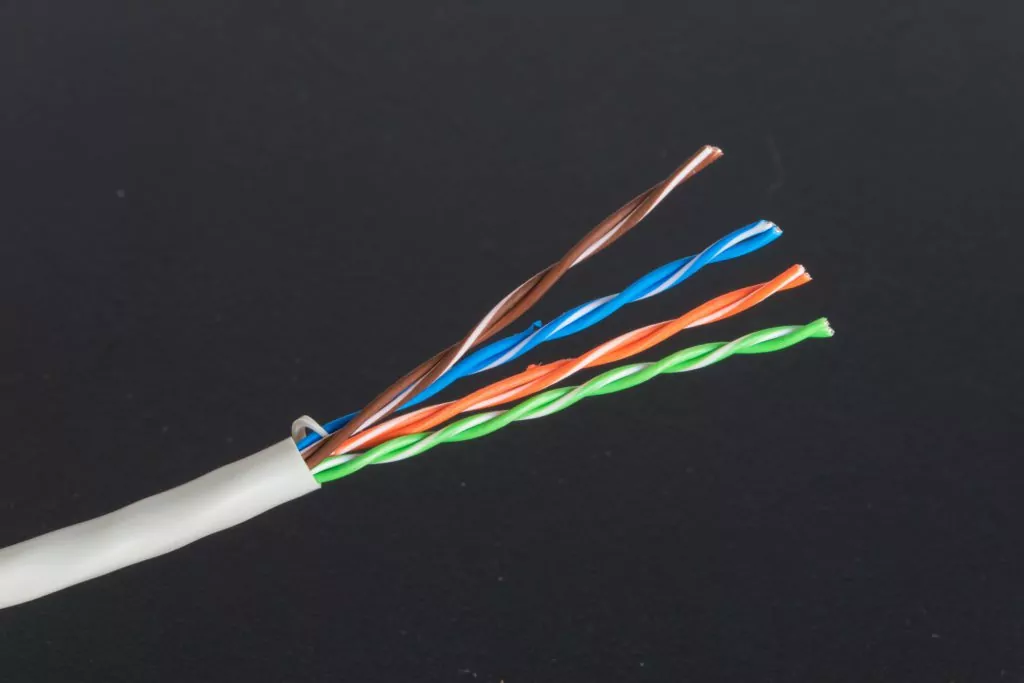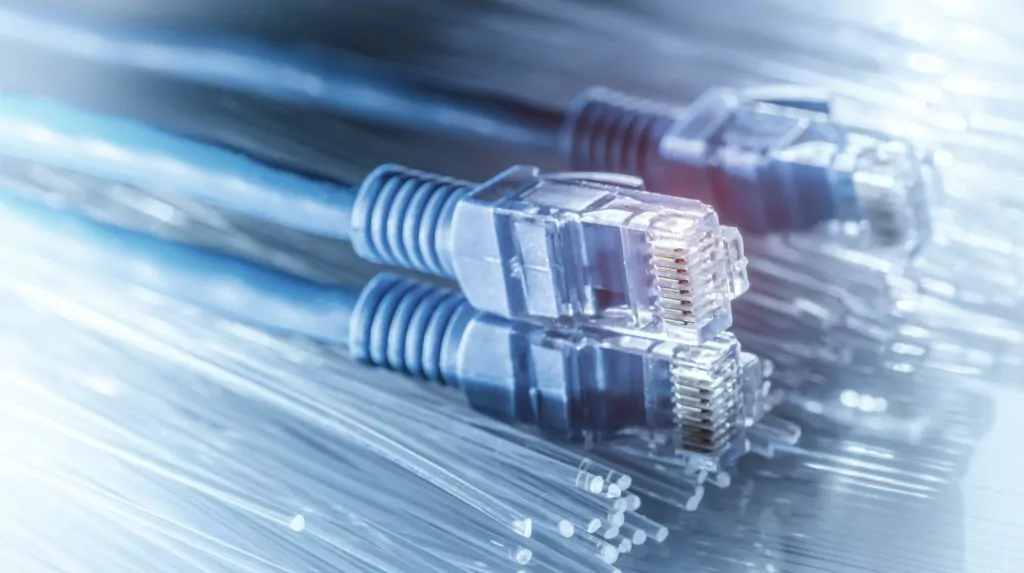Here’s whether Ethernet cables affect internet speed:
Your Ethernet cable won’t change the speed defined by your internet plan. Your speeds are dictated by your plan, not your cable.
There won’t be any speed benefit with a different Ethernet cable unless yours is broken.
Your Ethernet connection will usually be faster and much more stable than Wi-Fi, though.
So if you want to learn all about in how far Ethernet cables affect your internet speed and what to do about it, then this article is for you.
Let’s get started!
- Ethernet Light Blinking & Computer Is Off: Why?
- Always-on Ethernet Port Light: Meaning?
- Ethernet Connected But No Internet: How to Fix?
- Ethernet Port Light Colors: Meanings?
- Internet With No Ethernet Wall Port: How to?
- Wi-Fi Router Without a Coaxial/Ethernet Cable: How to?
- Wall Ethernet Port Is Not Working: How to Fix?
- Ethernet Cable Connection: Affects Wi-Fi Speed?
- Ethernet Light Blinks Orange/Green: Meaning?

What About Ethernet Cables and Internet Speed?
We’ve made tremendous strides in internet technology in the past decade. So much so that a typical household now has Wi-Fi with speeds that were once considered almost enterprise-level.
But, how fast is fast enough?
When we know that there are fiber internet connections with speeds that go up to 10 Gbps, we’re left always asking ourselves how we can get the most out of our broadband speeds.
You’ll often hear one solution mentioned: switching to an Ethernet cable instead of Wi-Fi.
So, how significantly can an Ethernet cable affect your internet speed?
Read on to learn more about this type of connection and its benefits.
First, How Does the Internet Work?
The internet is an extensive network of networks that communicate through a complex infrastructure of cables, routers, and Internet Service Providers.
Two things here are important to remember.
First, the internet is decentralized—it doesn’t have a governing body or a single place where all information is stored. It isn’t this one thing that you can locate. It’s a system of networks that all work together.
So, asking something like “where is the internet?” would make no sense because you are the internet—you and everyone else who has a connection.
Pretty poetic, right?
Second, while the internet may seem like this abstract, digital thing, it’s actually surprisingly analog.
You wouldn’t be too far off if you claimed that the internet is all computers, data centers, and routers connected (physically) with wires that traverse the whole world.

The point here is that your Ethernet cable (or Wi-Fi router) is the last point in a complex chain of factors that dictate your internet connection speed.
So, curb your expectations when it comes to increasing your internet speed by switching to a cable.
Chances are, you’ll get much better results by changing your ISP (Internet Service Provider) or upgrading to a better, more expensive plan.
Does Ethernet Cables Affect Your Internet Speed?
Ethernet cables look much like your standard telephone cable, only thicker and with larger connectors.
Ethernet cables’ most common structure is called the “twisted pair,” which feature—you guessed it—pairs of wires that are twisted together. This is the industry standard for cable internet, and it’s outperformed only by optic fiber connections.
That’s because these cables use separate wires to transmit and receive data, reducing electrical noise that can sometimes interfere with the data being transferred.

Depending on which types of devices they connect, Ethernet cables can be:
- Patch cables: used to connect two different devices (e.g., your console and your router).
- Crossover cables: used to connect two same devices (e.g., your two PCs).
Categories of Ethernet Cables
Ethernet cables also come in different categories when it comes to the speed with which they carry data.
- Cat5 cable: an old type of cable that was once considered the most reliable. It’s capable of speeds up to 100 Mbps. It’s also used for other signals like video and telephones.
- Cat5e cable: the current variant in use in Category 5. They can support higher speeds, up to 1 Mbps.
- Cat6 cable: these cables have thinner wires than the Cat5 cables, and they’re also stiffer. They can reach speeds of up to 10 Gbps, but they have a reduced maximum length of 55m.
- Cat6a cable: the “a” stands for “augmented,” so these cables feature the same speeds as their predecessor. Still, they can be up to 100m long (like the previous variants).
- Cat7 cable: these cables need to be shielded, as well as all the wires found inside. This is done to avoid crosstalk or interference between signals. It can support speeds up to 100 Gbps.
There are also Cat8 cables, but these are created specifically for data centers, so they’re much more expensive and not practical for household use.
Keep in mind one thing, though: your Ethernet cable won’t change the speed defined by your internet plan.
In other words, switching from a Cat6 cable to a Cat7 cable won’t help increase your speed if you’re paying for a 2 Gbps connection. Your speeds are dictated by your plan, not your cable.
Are Ethernet Cables Faster Than Wi-Fi?
That being said, your Ethernet connection will usually be faster and much more stable than Wi-Fi. Still, the gap could not be as significant as you might think.
Wireless standards like the 802.11ac developed in 2013 can achieve speeds that can go up to almost 7 Gbps which is incredible for all types of connections.
For comparison, wired connections can go up to 10 Gbps (unless we’re talking about optical fibers, which can go up to 100 Gbps but are still rare).

In general, Wi-Fi internet can be high-speed if you’re using the proper wireless standard and you’re paying for a top-of-the-line plan.
The thing with Wi-Fi is, these speeds are theoretical.
A wireless connection (even as powerful as 802.11ac) will rarely achieve its maximum speed in practice.
Your wireless connection will be shared by all your devices in practice, so having your PC, several smartphones, and a TV all share the same Wi-FI will undoubtedly affect your speeds.
This means that running a line from your router to your device will likely result in a more stable connection. Unlike Wi-Fi, Ethernet cables can almost guarantee you a consistent speed.
But, your internet experience isn’t only about speed. It can also be about latency, especially if you’re a gamer. Ethernet cables perform better in this aspect as well.
Another thing you shouldn’t ignore is the fact that cable connections are more secure than Wi-Fi. Since it’s a piece of hardware that goes directly to the router, it can’t be hacked like your Wi-Fi password.
Overall, while the gap between Ethernet and Wi-Fi has been reduced, cable connections are still faster, safer, and more stable.
Different Wi-Fi Standards: Which One Is the Fastest?
How about Wi-Fi? What speeds can you achieve with this connection, and what are all the standards to choose from?
- 802.11a and 802.11b: These two standards were both approved simultaneously, but the 802.11b hit the market a little earlier, causing some confusion. The “a” standard was able to transmit over the 5 GHz frequency (achieving higher speeds). In contrast, the “b” standard only had 2.4 GHz available (providing better range). The 802.11b standard is now referred to as “Wi-Fi 1” and the 802.11a as “Wi-Fi 2”.
- 802.11g: This standard used 2.4 GHz achieved up to 54 Mbps (same as 802.11b but on lower frequencies). It was released in June 2003.
- 802.11n: Also known as “Wi-Fi 4”, the 802.11n was a significant Wi-Fi breakthrough, allowing speeds up to 600 Mbps. It also allowed using two frequencies, both the 2.4 GHz and the 5 GHz one. This standard was released in 2009.
- 802.11ac: This standard broke through the 1 Gbps range and offered speeds up to 1 Gbps for the 2.4 GHz frequency or more than 2 Gbps for the 5 GHz frequency. It was released in 2013.
- 802.11ax: This is the latest standard that was approved on February 9th, 2021. It’s meant to provide great speeds at 2.4 GHz, 5 GHz, and other license-exempt bands between 1 and 7 GHz. This standard is mentioned as a solution for high-density situations where many users are on the same signal (malls, corporate offices, etc.).
How to Set up Your Ethernet Cable?
If you want to switch to a cable and get a more stable connection, it’s pretty easy to do.
Once you have an Ethernet cable, all you need to do is connect it to your PC and your router—no need to install any software or check any settings.
Find the appropriate port on your router (usually marked as “Ethernet” or “Network”) and plug in the cable.
If your laptop doesn’t have an Ethernet port, you can get an Ethernet-to-USB adapter.
Once you plug the cable into both devices, the little Wi-Fi icon on your PC will change to an Ethernet icon, showing you that your PC is connected.
A lamp on your router will also likely start to shine, and you’ll get a faster, more stable connection just like that!
Do Ethernet Connections Affect Wi-Fi Speed?
On another note, do Ethernet connections affect your Wi-Fi speed?
Ethernet connections do not reduce the speed of other devices.
Wi-Fi connections with a high number of devices will result in slower speeds.
Due to the constant speed of Ethernet connections, you may believe other devices are losing speed to them.
Learn all about whether an Ethernet connection affects Wi-Fi speed here.

